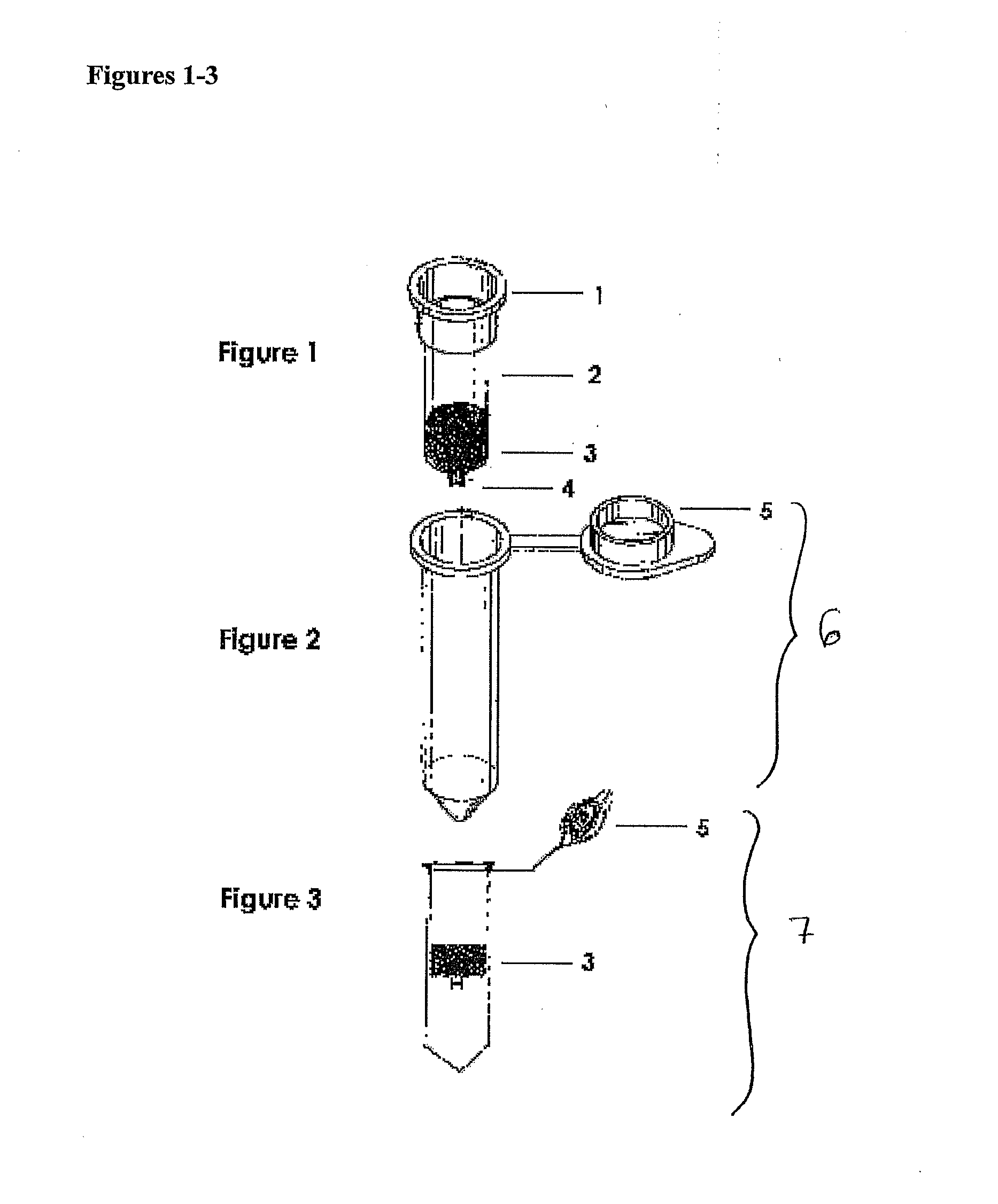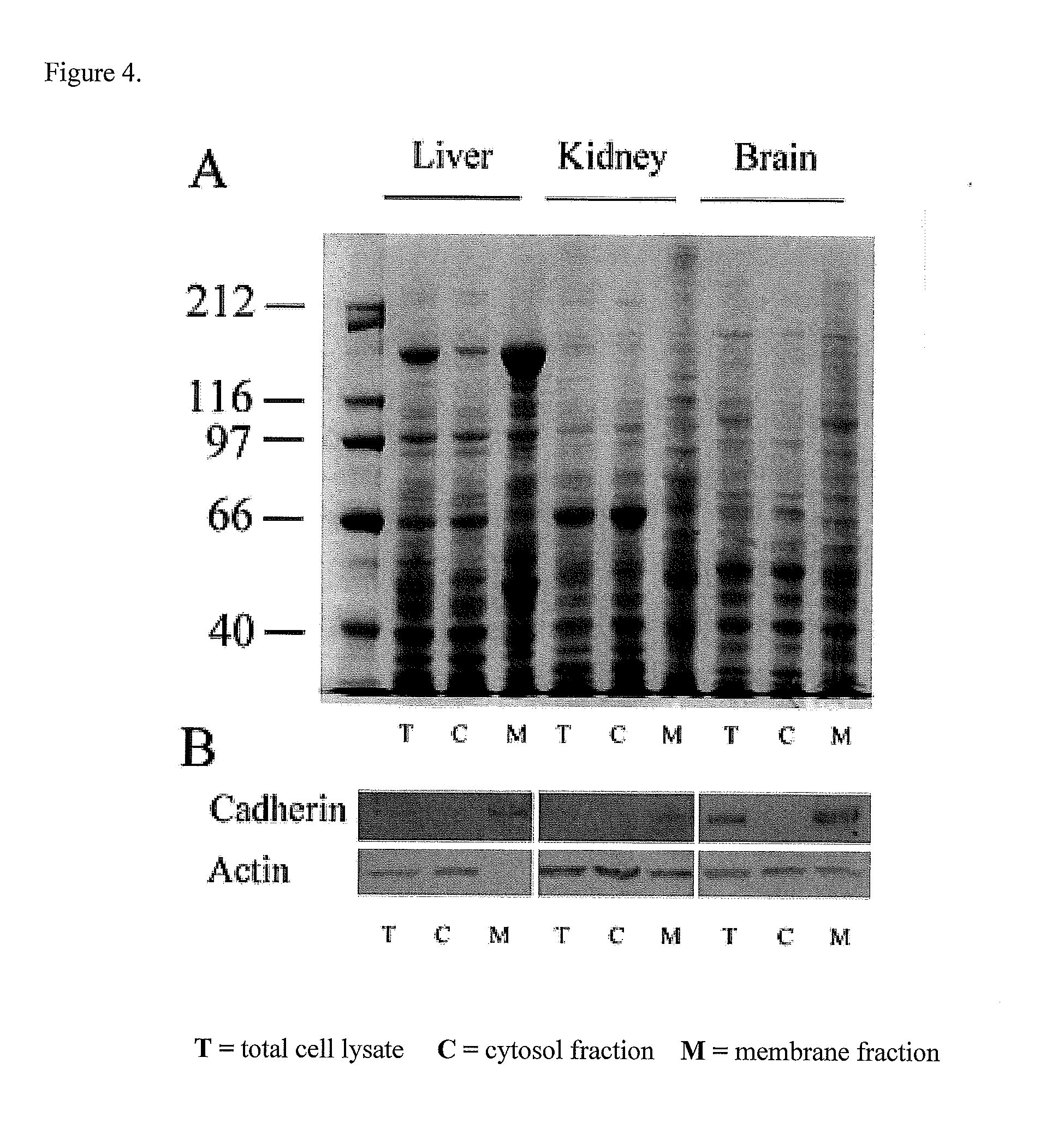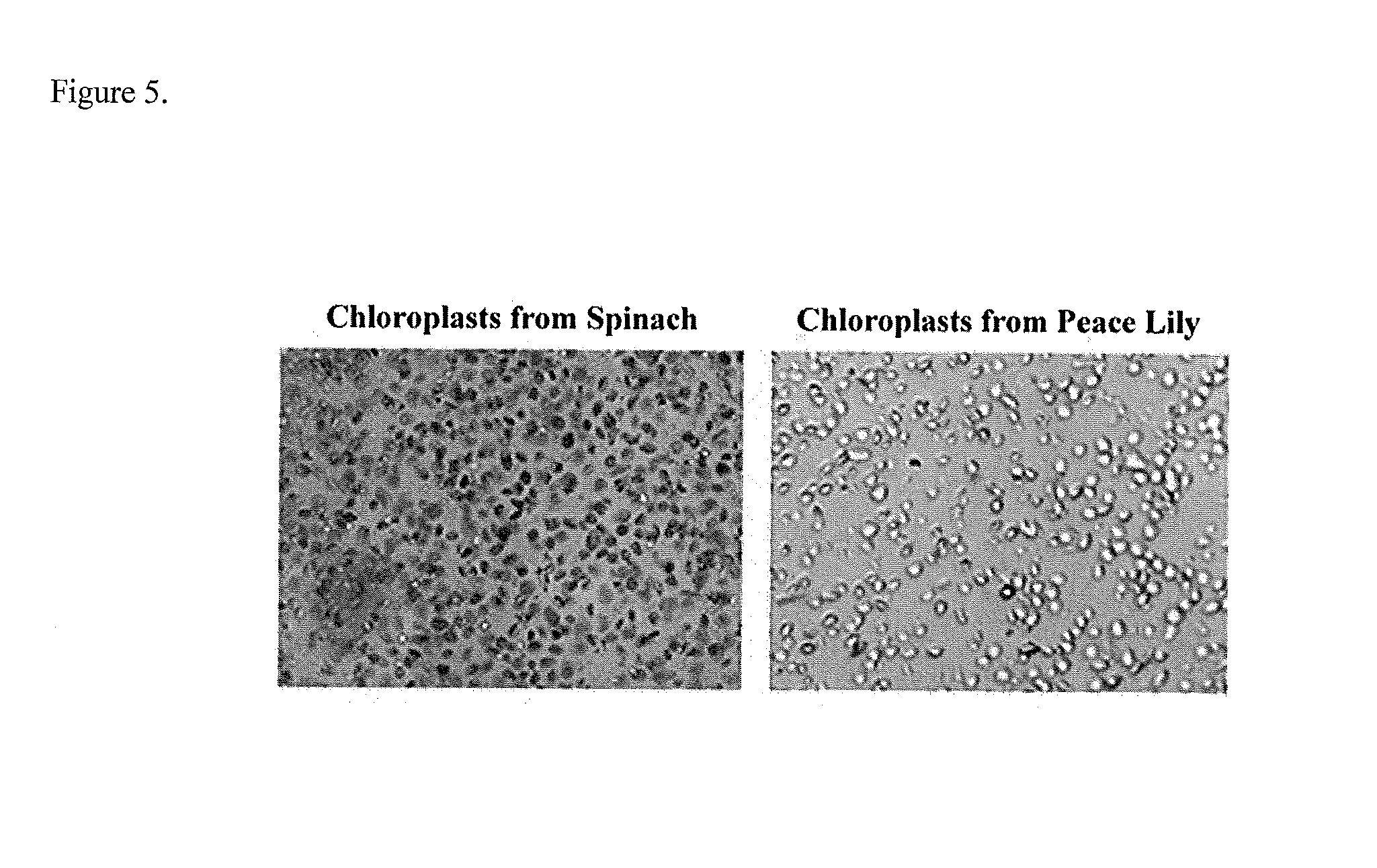Rapid membrane isolation method for animal and plant samples
a technology of animal and plant samples and membrane isolation, which is applied in the field of rapid membrane isolation method for animal and plant samples, can solve the problems of affecting the use of glass homogenizers and tissue blenders, and requiring more than one hour to complete the procedur
- Summary
- Abstract
- Description
- Claims
- Application Information
AI Technical Summary
Benefits of technology
Problems solved by technology
Method used
Image
Examples
example 2
Isolation of Crude Membranes from Mouse Tissues
[0039]Fresh or frozen mouse tissue (20-40 mg) was placed in a filter cartridge. Two hundred microliters of cold hypotonic buffer (10 mM Tris-HCl, pH 7.5) was added to the tissue and the tissue was homogenized for 30 seconds with a flat end plastic rod. After homogenization 300 ul Tri-HCl buffer was added to the filter and the following steps were performed sequentially:[0040]1.Centrifuged the filter cartridge at 14,000 rpm in a microcentrifuge at 4° C. for 30 seconds.[0041]2. Discarded the filter and resuspended the pellet in collection tube by vortexing. Centrifuged the tube at 3000 rpm for 1 min to remove most nuclei, un-ruptured cells and tissue debris. Carefully removed the supernatant without disturbing the pellet. Transferred the supemantant to a 1.5 ml microfuge tube and centrifuged the tube at 14-16,000 rpm at 4° C. for 15 min. The pellet contained isolated crude membranes. FIG. 4 shows the results of proteins associated with me...
example 3
Isolation of Chloroplasts from Plant Cells
[0042]The following can be used for isolation of intact chloroplasts from 5-100 mg fresh plant tissue samples (leaves, seeds and soft stems etc.). If smaller or larger amounts of starting materials are used, the amount of buffers used may be adjusted proportionately.
1. Pre-chill buffers and the filter cartridge in collection tube on ice.
2. Approximately 5-100 mg fresh plant tissue were placed in the filter. Plant leaves were folded or rolled and inserted into the filter. The leaf was punched in the filter repeatedly with a pipette tip about 60 times to reduce the volume (for tissues less than 50 mg punching with the tip is not necessary). Seeds and soft stems were cut with a sharp blade into smaller pieces and placed in the filter cartridge(s).
3. Cold homogenization buffer (200 μl, 1×PBS with 20% glass bead, Crystal Mark Inc. Glendale, Calif.) was added to the filter (shake the bottle vigorously for a few seconds prior to pipetting). The tis...
PUM
 Login to View More
Login to View More Abstract
Description
Claims
Application Information
 Login to View More
Login to View More - R&D
- Intellectual Property
- Life Sciences
- Materials
- Tech Scout
- Unparalleled Data Quality
- Higher Quality Content
- 60% Fewer Hallucinations
Browse by: Latest US Patents, China's latest patents, Technical Efficacy Thesaurus, Application Domain, Technology Topic, Popular Technical Reports.
© 2025 PatSnap. All rights reserved.Legal|Privacy policy|Modern Slavery Act Transparency Statement|Sitemap|About US| Contact US: help@patsnap.com



